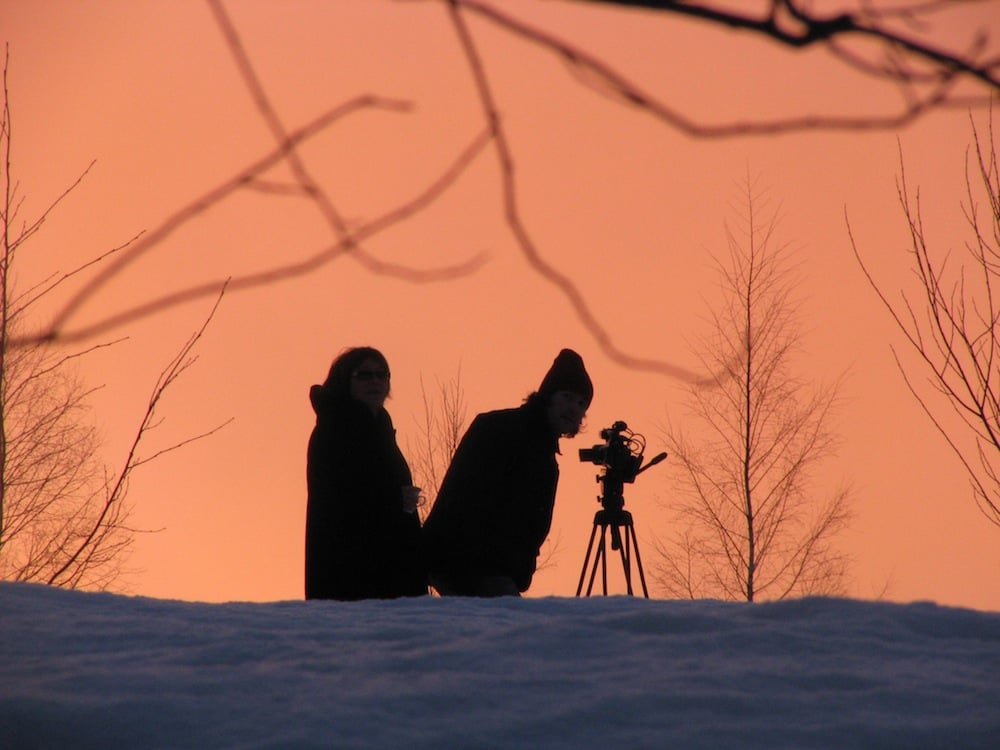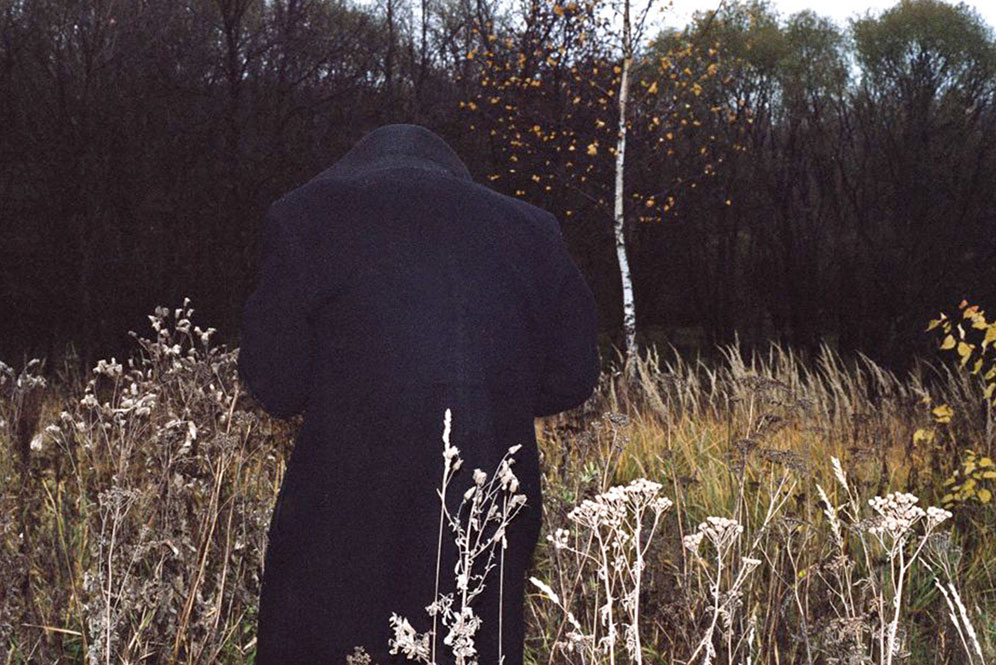New objective: autism documentary Anton’s Right Here rewrites the rules

Critic-turned-director Lyubov Arkus shuns the traditional impassive approach of documentary in favour of an intensely personal relationship with the subject. The result, argues Giuliano Vivaldi, is a powerful meditation on autism and the language of cinema
A film critic becoming a director may have been common enough in the Sixties French New Wave, but in contemporary Russia Lyubov Arkus’s career change is somewhat unique. Arkus, 52, is the editor of respected St Petersburg film journal Séance and one of Russia’s best-known critics, so it was something of a surprise when she stepped behind the camera to make Anton’s Right Here, a documentary about autism. But after premiering in Venice last summer the film has gone on to win awards around the world, and helped create a new form of social documentary that challenges the boundaries between director and subject.
A sensitive topic such as autism presents the filmmaker with a significant ethical dilemma. Sergei Dvortsevoy, one of the great Russian documentary directors of the early Nineties, eventually moved into feature films because he was unhappy with the fact that, in documentaries, “the worse it is for the subject of the documentary, the better it is for the filmmaker”. Arkus, however, resolves this problem by confounding many of the accepted rules. Anton’s Right Here is not an old-style social documentary in which the director observes and retells the life of the protagonist in order simply to generate either indignation or pity. In an interview this January Arkus told me that she did not think of the film’s protagonists as documentary subjects, but rather “as people who were close to me”.
The film, which took four years to make, follows the story of a young autistic boy, Anton Kharitonov, whom Arkus met after reading his poem People in a compilation of writing by autistic children. As the film begins, it seems likely that Anton, who divides his time between home and a psychiatric hospital, may have to become a full-time resident of a psychological institution, a place he would be unlikely to survive. The film tracks his journey, but also the increasingly close and moving relationship between Anton and Arkus.
“Documentary cinema can only regain meaning ‘in the face of pain, out of pain and through pain’”
The director makes no attempt to whitewash the harsh reality for autistic children in Russia in the film; her narration of Anton’s Dantesque trip through the hell of institutions all too ready to abandon the weak and vulnerable is as powerful an indictment as there could be. But the film is not dominated by a sense of misery and indignation, and avoids pointing moralistic fingers. The scene depicting the transformation of Anton’s father’s attitude towards him as he views footage from the film is a masterful reflection on the camera’s power to transform reality. Anton’s condition becomes something shared and universalised, bringing us back to that central and unresolved theme of Sixties cinema — the probing of the nature and limits of communicability that is present in the films of auteur filmmakers such as Antonioni, Herzog and Soviet filmmaker Marlen Khutsiev.
Moreover, the traditional structure of documentary objectivity is challenged. The situation is so bleak at one point that Arkus is compelled to abduct Anton from an institution, clearly disregarding any notion of the director as an impassive observer. Arkus also intervenes in the film with a personal tale about her own separation from her father, and her grandparent’s suffering under Stalin. Arkus thus highlights her inter-subjective gaze, reducing the distance between herself (and the viewer) and the subject.
It was Alexander Rastorguyev, one of Russia’s most innovative documentary makers, who helped Arkus understand the necessity of playing by different rules. In 2008 she published his manifesto Natural Cinema, in which he claimed that documentary cinema had died and could only regain meaning “in the face of pain, out of pain and through pain”. Arkus told me that the ideas in Rastorguyev’s manifesto impressed her enormously, and impacted the way Anton’s Right Here approaches Anton’s condition and the way she treats cinema as a transformational medium.
“Cinema has been devoured by the demands of television”
As such, Anton’s Right Here departs from international trends in documentary-making: in recent years cinema has been devoured by the demands of television and all too often been pushed in the direction of celebratory, pathos-laden and even manipulative films in the vein of Jonathan Caouette’s schizophrenia memoir Tarnation (2003). In the worst case, the filmmakers simply create their own reality — an accusation that was levelled at Born into Brothels (2004), an American documentary film made in India. Political or social advocacy films, of the sort made famous by Michael Moore, have found their own niche of late, but have rarely advanced documentary as an art form. Even in Russia, with its strong documentary tradition, few filmmakers make the interrogation of the relationship between director and subject — the essence of documentary film — as central to their work as Arkus. (Rastorguyev, and his collaborator Pavel Kostomarov, are an obvious exception.) One of the most established names in Russian documentary, Vitaly Mansky, explores the world of post-Soviet glamour in sardonic tones in films such as Broadway, Black Sea (2002), but without stepping in front of the camera. Viktor Kossakovsky takes a different tack, placing the emphasis on an almost metaphysical aesthetics, culminating in his latest ode to nature ¡Vivan las Antipodas! (2011). But neither he, nor his own antipode, the more directly political, socially controversial films of Marina Razbezhkina’s influential teatr.doc school, challenge the established norms of objectivity and separation so vividly.
“It was very much his relationship to the world and to others, and his strength, which defined the film”
In addition to Rastorguyev, two other people were instrumental in helping Arkus realise a vision of “natural cinema”. The first was the cameraman, Alisher Khamidkhodzhayev, who Arkus credits with being able to portray “the very core of the human being rather than simply the human face or profile”. As it was Arkus’s first film, it was Khamidkhodzhayev who took on the role of the helmer at first, while she learned the ropes. “I didn’t even look into the viewfinder at first,” she said. The other key influence was Anton himself, who almost becomes the co-director. Arkus explained his unique role in the process: “It was very much his relationship to the world and to others — to his mother and me — and his strength which defined the film and powerfully drove the plot of the film forward. You mustn’t forget how very charismatic he is, how ‘cinegenic’ he is.” In many ways the camera became Anton’s substitute for the pen, a tool with which he could write a new text about himself. This is made explicit at the end when Anton is given the camera to shoot the final scene himself.
Anton’s Right Here has something very rare and powerful to say, tying autism to the very core of what is articulated by film today. It has helped transform social documentary as a genre, with the aesthetic and the ethical working together symbiotically, bringing into question clear distinctions between the observed and observer, the director and protagonist. The camera loses its cold distance, becoming an instrument for profound reflection, communication and even liberation. Anton’s Right Here may not vaunt its formal experimentation, but it nevertheless does manage to display new territories of human nature hitherto only partially revealed.


